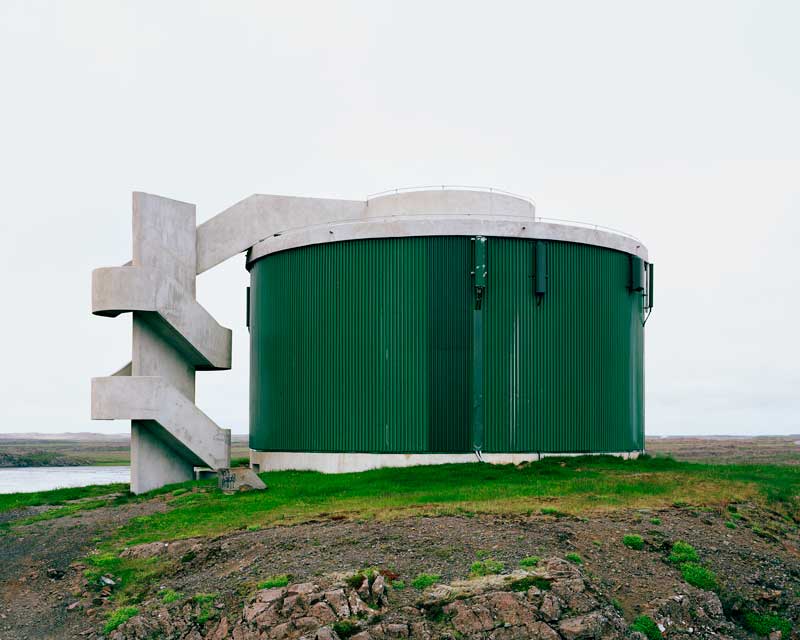
Enclosed Moments
A.S. Bramble on Rasmus Norlander
“Need one point out that (…) the gentle warmth of enclosed regions is the first indication of intimacy? This warm intimacy is the root of all images.”1 Rasmus Norlander produces still images, not movies, not shouting photos, not unsettling dynamic pictures. As an architectural photographer, Rasmus has, in my opinion, a bold stance regarding his […]
“Need one point out that (…) the gentle warmth of enclosed regions is the first indication of intimacy? This warm intimacy is the root of all images.”1
Rasmus Norlander produces still images, not movies, not shouting photos, not unsettling dynamic pictures.
As an architectural photographer, Rasmus has, in my opinion, a bold stance regarding his profession. His photographs do not try to reproduce the buildings they depict, they do not try to replace the actual experience of the space, they are two dimensional representations of the reality of a certain building, in a certain place at a certain time.
I find this honesty and humbleness extremely valuable in architectural photography. Distancing his work from a noisy spectacularity, he allows the projects to be enticing and suggestive in a very subtle way, denying the need for a fast readability of the architecture’s dynamic and spaciality.
Spaces are shown in a generic way, open wide to be read and interpreted, almost scaleless in their cool nudity. Warmth is scarce in his photos but comfort is still, somehow, a constant. People are, most of the time, absent from his frames and, when present, they acknowledge the camera in a technical interaction, gazing into the lens. Rooms are flattened into the bi- dimensional plane of the image, bringing to our atten- tion the materialisation of the spaces.
There is a peaceful stillness to these works. Shapes and colours seem to retrieve to a quieter place within the frame, still present, still dynamic and full of meaning but toning down to a balanced warm whisper, allowing us to discover our own path into the beauty of the still image.
In his “Zurich West” series he manages to isolate the quiet roughness out of the ever-growing, hektik, ambitious, constant construction site that Zurich has become in the last decade. The playground of numerous architects, where they interact with each other in a multitude of ways, is here shown in a fair manner, with a complete absence of favoritism in the way buildings are pictured, giving us the rare chance of reading their intentions and presence as they were intended to be read. A part of the city that lives and acts as a beehive, full of movement and noise, presents itself frozen in the calm frames of the series. Details are allowed enough time to appear to our eyes, are allowed the needed significant presence to act as markers on the evolution of the cityscape. The diffuse treatment of light lays a thin tissue over the scene, enabling the abrupt verticality of the pictured neubauten to smooth into the unsharp horizon.
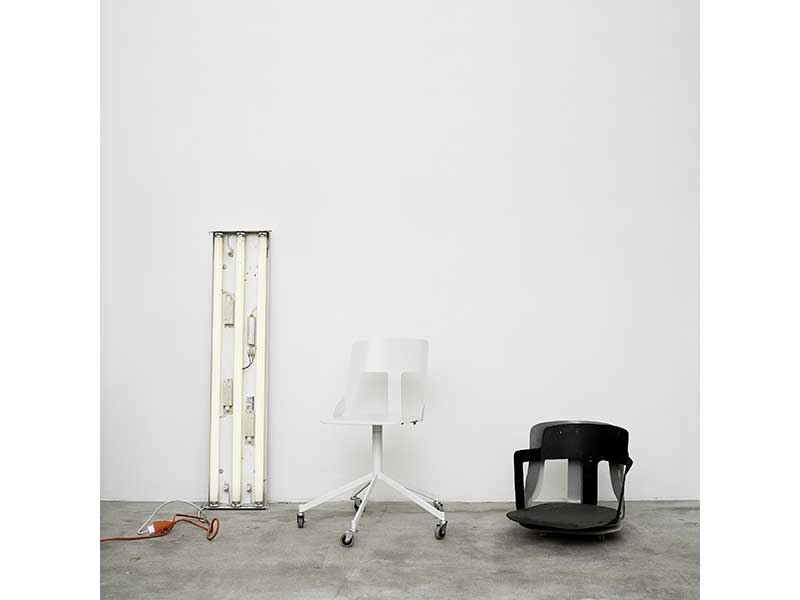
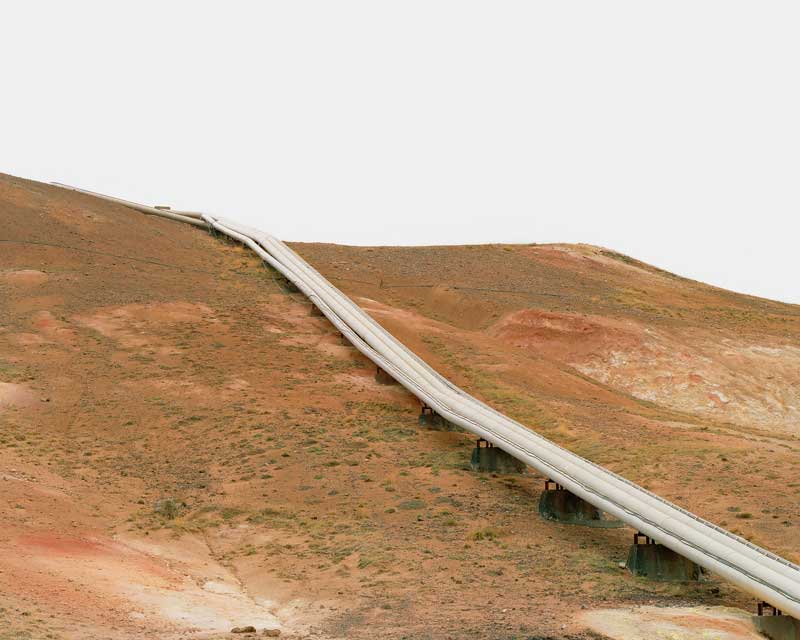
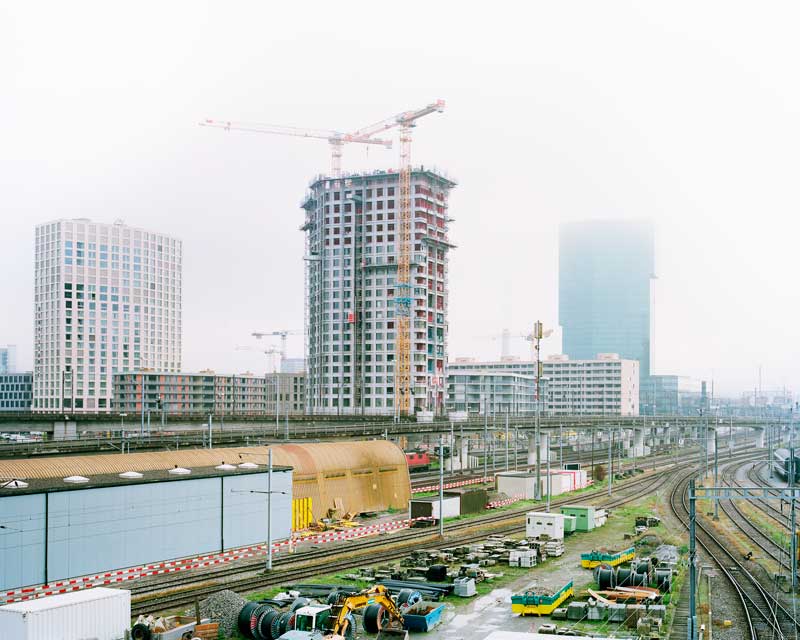
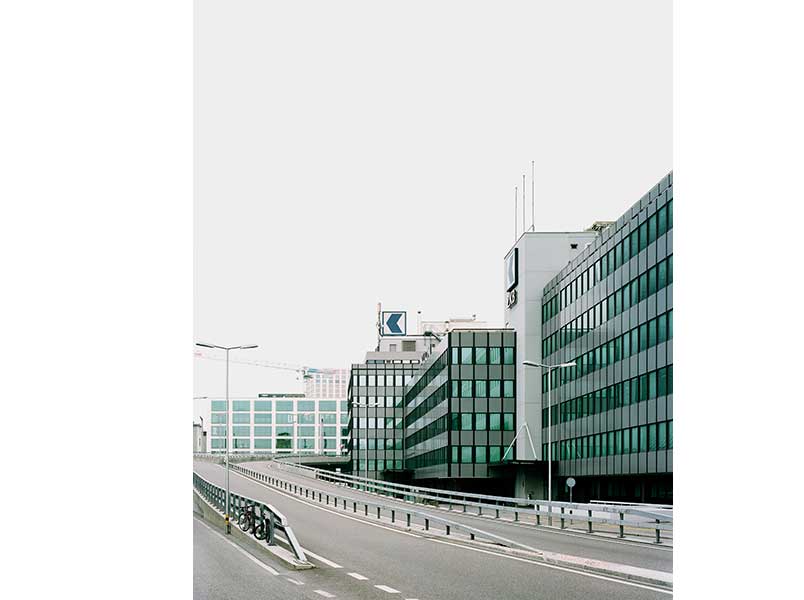
MANIFORESTO
Time is like a river but the photographer stands still. Techniques, styles, clients and commissions are like floating branches that can brush you when they pass but never move you. The water is tempting and seem easy to ride. But if you dive in you loose your perspective among the waves and risk drowning in the currents. It will take you away, tumble you around and you will never find the same place again. Maybe it is possible to find a new perspective by holding on to a rock against the current, but most likely you will sink. To navigate in a current is almost impossible.
By refusing to dive you foster your own perspective. The more branches that float by, the more you learn about the forest above.
As a photographer you have a limited time with each branch. They might float fast or slow, straight or in circles. But every branch floats the same way as the others. They are all from the same forest caught in the river of time and ideas. When they have passed, others are sure to come, as long as you stand still and wait. Some of the branches you can reshape, brake or push into a faster stream.
Some are bigger and stronger than you. The bigger they are the harder it is to touch them. You must be careful not be pushed into the stream and lose your point of view. Once you have fallen, there is no way to swim upstream. You can only hope to be lucky and grab another stone further down.
Patience and consistency will always be rewarded in the end.
rasmusnorlander.se
Photography: Rasmus Norlander